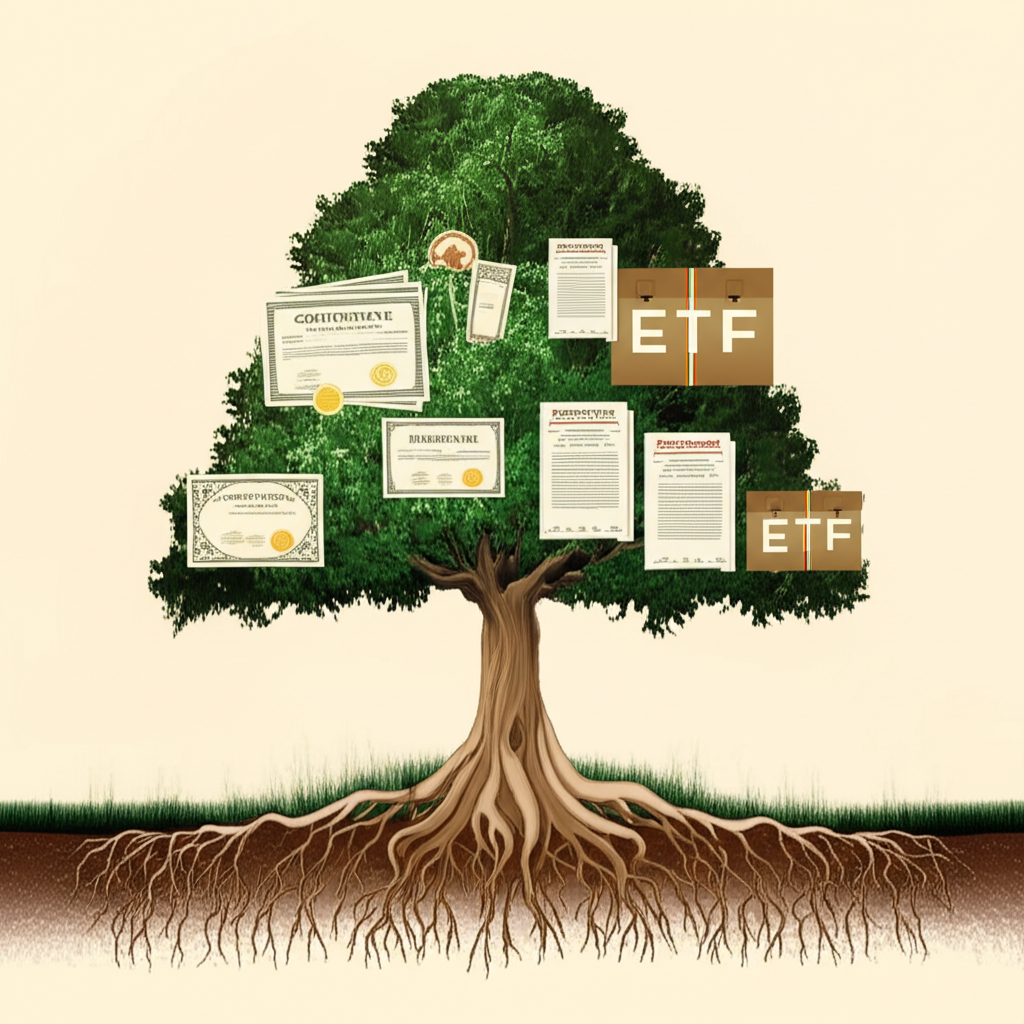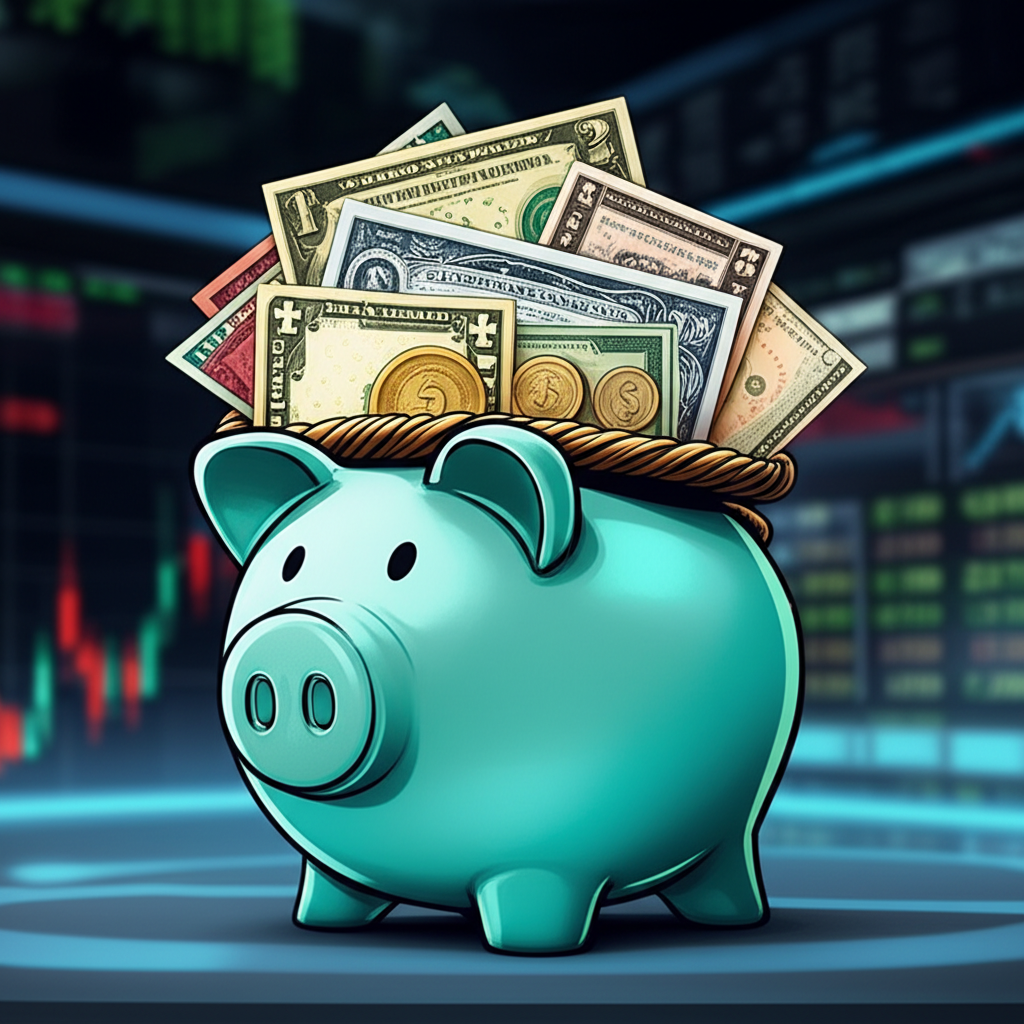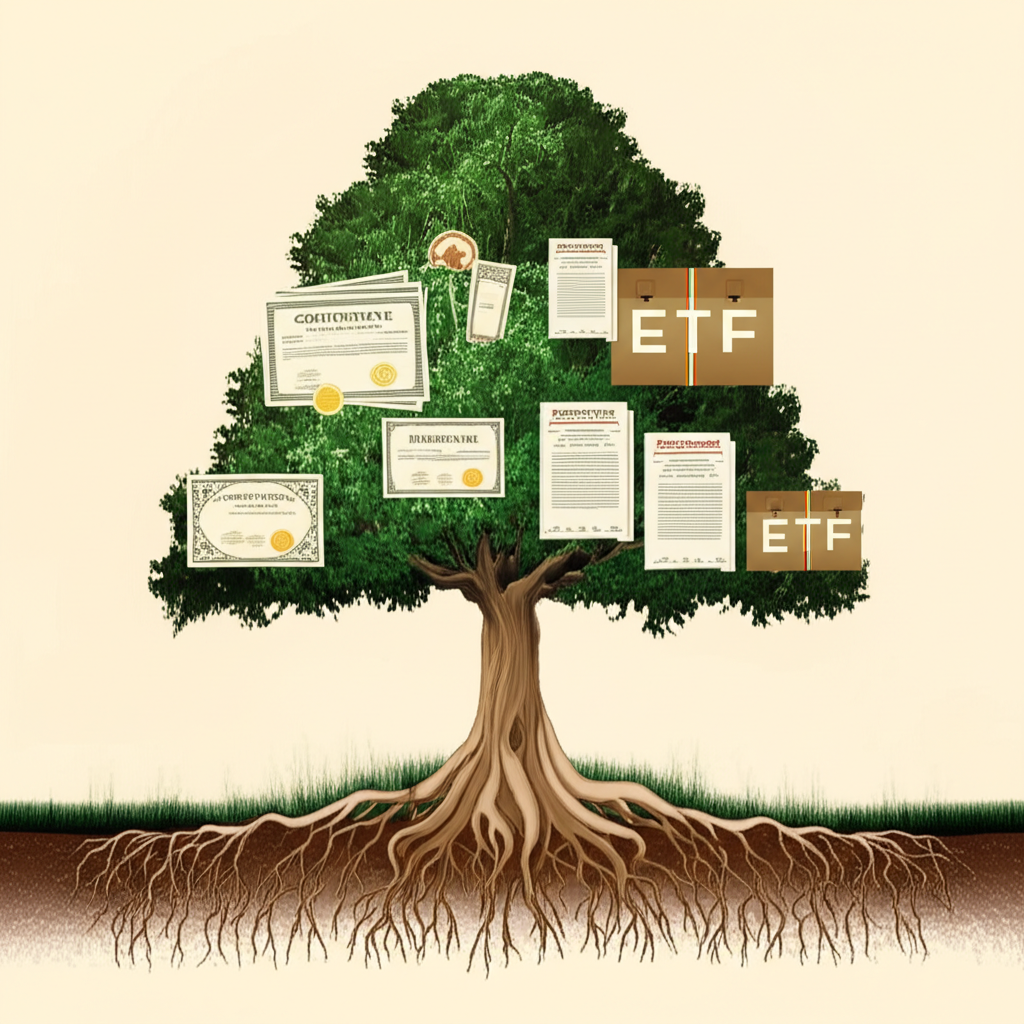Introduction to Treasury ETFs: Understanding the Basics

Treasury Exchange Traded Funds (ETFs) have become a cornerstone for investors aiming to balance safety, liquidity, and income within their portfolios. These funds provide exposure to U.S. Treasury securities—debt instruments issued by the U.S. Department of the Treasury to fund government operations. Unlike purchasing individual Treasury bonds, investing in a Treasury ETF offers a streamlined, diversified approach by pooling multiple government-backed securities into a single, tradable vehicle. This structure appeals especially to those prioritizing capital protection and steady, if modest, returns. The foundation of their appeal lies in the strong creditworthiness of U.S. government debt, widely regarded as one of the most secure asset classes in global finance.
What is a Treasury ETF?

A Treasury ETF is an investment fund that holds a collection of U.S. Treasury bonds, notes, and bills, and trades on major stock exchanges just like individual stocks. When you buy shares in a Treasury ETF, you’re not purchasing a specific bond but gaining proportional ownership in a portfolio of these securities. This setup delivers immediate diversification across different maturities and issuance dates, helping to mitigate the risks tied to any single bond. The share price of a Treasury ETF fluctuates throughout the trading day based on investor demand, broader market movements, and the performance of the underlying bonds. This intraday pricing offers greater flexibility compared to traditional mutual funds, which only price once after market close.
Why Consider Treasury ETFs for Your Portfolio?

Incorporating Treasury ETFs into your investment strategy can bring several strategic advantages. First and foremost is **capital preservation**—backed by the full faith and credit of the U.S. government, these funds are among the safest ways to protect principal, making them ideal for conservative investors or those nearing retirement. They also enhance **portfolio diversification**, often moving inversely to equities during market downturns, which helps cushion overall losses. Another major benefit is **high liquidity**; since they trade on exchanges, investors can enter or exit positions quickly during market hours without significant price slippage. Additionally, Treasury ETFs generate **regular income** through monthly or quarterly dividend distributions, funded by the interest payments from the underlying bonds. Finally, they offer **easy access** to the bond market, removing the complexity of buying individual Treasuries directly through auctions or secondary markets.
Types of Treasury ETFs: Matching Your Investment Horizon

Treasury ETFs are typically grouped by the average maturity of the bonds they hold. This classification plays a critical role in determining how sensitive the fund is to interest rate changes and how much income it can potentially generate. By aligning your choice with your investment timeline and risk appetite, you can better manage volatility and optimize returns.
Short-Term Treasury ETFs (1-3 Years)
Short-term Treasury ETFs focus on bonds maturing between one and three years. Because of their shorter duration, these funds are less affected by shifts in interest rates, offering **lower volatility** and more predictable pricing. They’re often used as a conservative alternative to savings accounts or money market funds, providing slightly higher yields with minimal risk to principal. Investors who need stability over the near term—such as those building an emergency fund or preparing for a large purchase—may find these ETFs particularly useful. Notable examples include the iShares 1-3 Year Treasury Bond ETF (SHY) and the Vanguard Short-Term Treasury ETF (VGSH).
Intermediate-Term Treasury ETFs (3-10 Years)
Intermediate-term Treasury ETFs invest in bonds with maturities ranging from three to ten years, striking a practical **balance between yield and risk**. These funds generally offer higher income potential than their short-term counterparts while maintaining a relatively stable profile. Their moderate sensitivity to interest rate fluctuations makes them suitable for investors seeking income without taking on excessive duration risk. One of the most widely held funds in this category is the iShares 7-10 Year Treasury Bond ETF (IEF), which has been a staple in many balanced portfolios for years.
Long-Term Treasury ETFs (10+ Years)
Long-term Treasury ETFs target bonds with maturities exceeding ten years, often extending to 20 or even 30 years. These funds carry **higher interest rate risk** due to their extended duration, meaning their market value can swing significantly when interest rates change. However, this added risk comes with the potential for **higher yields**, making them attractive when rates are falling or economic uncertainty is high. Long-term Treasury ETFs often perform well during recessions or periods of declining growth, as investors seek safety and bond prices rise. The iShares 20+ Year Treasury Bond ETF (TLT) is a leading example and is closely watched as a barometer of investor sentiment toward long-duration bonds.
Ultra-Short Term Treasury ETFs
Ultra-short term Treasury ETFs are designed for maximum capital stability, holding instruments with maturities of less than one year—sometimes just a few days. These funds exhibit **minimal price fluctuation** and are ideal for parking cash that may be needed soon. They serve as a secure, liquid alternative to traditional bank deposits or money market funds, especially in environments where safety and accessibility are top priorities. While returns are typically low, the trade-off is extremely high stability and quick access to funds.
How to Invest in Treasury ETFs: A Step-by-Step Guide
Getting started with Treasury ETFs is straightforward and accessible through most online brokerage platforms. With a few simple steps, investors can integrate these reliable instruments into their portfolios.
Choosing a Brokerage Account
The first step is opening a brokerage account with a trusted provider. Look for platforms that offer commission-free trading, intuitive interfaces, robust research tools, and strong customer support. Fees can eat into returns over time, so it’s wise to compare account structures across firms. Fidelity, Charles Schwab, and Vanguard are among the most popular choices, each offering strong ETF access, educational resources, and competitive pricing models.
Researching and Selecting Treasury ETFs
Once your account is active, take time to evaluate different Treasury ETFs based on key criteria. The **expense ratio**—the annual fee charged by the fund—directly impacts your net return; lower is generally better. The **SEC yield** gives insight into current income potential, while **duration** helps assess interest rate sensitivity. Reviewing the **portfolio holdings** can also reveal concentration risks or exposure to specific maturity segments. Tools from Morningstar or ETF.com allow side-by-side comparisons, making it easier to identify funds that match your goals. For instance, investors comparing yield and cost across short-term options can use ETF.com to analyze real-time data and historical trends.
Placing Your Trade: Buying and Selling Treasury ETFs
Treasury ETFs trade like stocks, so you can buy or sell shares anytime during market hours. Most investors place either a **market order**, which executes immediately at the current price, or a **limit order**, which allows you to specify the maximum price you’re willing to pay (or minimum you’ll accept when selling). A limit order helps avoid unfavorable execution, especially during volatile periods, giving you greater control over your entry and exit points.
Risks and Considerations When Investing in Treasury ETFs
Despite their reputation for safety, Treasury ETFs are not risk-free. A clear understanding of potential downsides is essential for making sound investment decisions.
Interest Rate Risk
The most significant risk for Treasury ETFs is **interest rate risk**. When interest rates rise, the market value of existing bonds tends to fall because newly issued bonds offer higher yields. This causes the net asset value (NAV) of bond ETFs to decline. Conversely, falling rates tend to boost bond prices. The extent of this price movement depends on duration—the longer the average maturity of the ETF’s holdings, the greater the volatility. For example, a long-term fund like TLT will experience larger price swings in response to rate changes than a short-term fund like SHY.
Inflation Risk
**Inflation risk** refers to the danger that rising prices could outpace the fixed income generated by Treasury ETFs. If inflation exceeds the fund’s yield, the real (inflation-adjusted) return becomes negative, meaning your investment loses purchasing power over time. While Treasury Inflation-Protected Securities (TIPS) ETFs are structured to adjust for inflation, standard Treasury ETFs do not provide this safeguard, leaving investors exposed to erosion in real returns during high-inflation periods.
Liquidity Risk (Though generally low for Treasuries)
Liquidity risk—the possibility of being unable to sell an asset quickly without a significant price concession—is generally minimal for Treasury ETFs. The U.S. Treasury market is one of the deepest and most liquid in the world, and major Treasury ETFs often see high daily trading volumes. As a result, investors can typically buy or sell large positions with little impact on price, making these funds highly accessible even in turbulent markets.
Treasury ETFs vs. Individual Treasury Bonds: Which is Right for You?
Choosing between Treasury ETFs and individual bonds depends on your financial objectives, experience level, and management preferences.
Advantages of Treasury ETFs
- Diversification: ETFs spread risk across many securities, reducing exposure to any single bond’s performance.
- Liquidity: Shares trade on exchanges throughout the day, offering flexibility to adjust positions quickly.
- Professional Management: Fund managers handle portfolio construction, rebalancing, and reinvestment, saving time and effort.
- Trading Simplicity: Buying and selling is as easy as trading a stock, often with no transaction fees.
- Lower Entry Cost: You can start with a single share, making them more accessible than individual bonds, which typically require $1,000 minimums.
Advantages of Individual Treasury Bonds
- Predictable Cash Flow: If held to maturity, individual bonds provide fixed interest payments and a guaranteed return of principal.
- Certain Maturity Date: Knowing exactly when funds will be returned helps with financial planning, such as funding future expenses.
- No Ongoing Fees: Direct ownership avoids management fees, potentially improving net returns over time.
- Reduced Reinvestment Risk: At maturity, you can choose when and how to reinvest, avoiding forced reinvestment during periods of low rates.
Navigating Treasury ETFs Through Economic Cycles
The performance of Treasury ETFs often shifts with the broader economic environment. Recognizing how they behave in different phases can help investors use them more strategically.
Treasury ETFs in a Rising Interest Rate Environment
During periods of rising interest rates, Treasury ETFs—especially those with longer durations—typically face **downward pressure on prices**. As the Federal Reserve raises rates to combat inflation or slow economic growth, newly issued bonds become more attractive due to higher yields, reducing demand for existing lower-yielding bonds. In such environments, short- or ultra-short-term Treasury ETFs tend to hold up better due to their limited rate sensitivity. Investors concerned about inflation-driven hikes might also consider TIPS ETFs, which adjust principal based on consumer price changes. Historical data from the Federal Reserve’s policy decisions show that aggressive tightening cycles, such as those in 2022–2023, can lead to meaningful declines in long-term bond values.
Treasury ETFs as a Safe Haven During Market Volatility
In times of market stress, Treasury ETFs often act as a **safe haven**. When stock markets decline or economic uncertainty rises, investors frequently move capital into U.S. Treasuries, driving up bond prices and lowering yields. This “flight to quality” effect is especially pronounced in long-term Treasury ETFs, which often rise in value when equities fall. For example, during the market turbulence in early 2020 caused by the onset of the COVID-19 pandemic, long-duration Treasury funds saw strong inflows and price appreciation as investors sought stability amid widespread volatility.
Tax Considerations for Treasury ETF Investors
Taxes play a key role in determining the true return on your investment. Understanding how Treasury ETFs are taxed can help you keep more of your earnings.
Federal vs. State & Local Tax Treatment
One of the standout benefits of Treasury ETFs is the favorable tax treatment of their interest income. The interest generated from U.S. Treasury securities—whether held directly or through an ETF—is **exempt from state and local income taxes**. This can be a significant advantage for residents of high-tax states like California or New York. However, this exemption applies only to interest income. Any capital gains realized from selling ETF shares are still subject to federal capital gains tax and may be taxable at the state level depending on your jurisdiction.
Capital Gains and Losses
When you sell Treasury ETF shares for a profit, the gain is classified as either short-term or long-term. **Short-term gains** (from holdings of one year or less) are taxed at your ordinary income tax rate, while **long-term gains** (held over one year) benefit from lower tax rates. If you sell at a loss, you can use capital losses to offset capital gains, and up to $3,000 of ordinary income annually. Excess losses can be carried forward to future tax years. Given the complexity of tax rules, it’s advisable to consult a qualified tax advisor to optimize your strategy.
Top Treasury ETFs to Consider (with Comparative Analysis)
Below is a comparative overview of some of the most widely held Treasury ETFs, grouped by duration and key metrics.
| Ticker | ETF Name | Duration | Expense Ratio | 30-Day SEC Yield (Approx.) | AUM (Approx.) |
| :—– | :———————————- | :——— | :———— | :————————- | :———— |
| SHY | iShares 1-3 Year Treasury Bond ETF | Short | 0.15% | 5.00% | $30B |
| VGSH | Vanguard Short-Term Treasury ETF | Short | 0.04% | 4.90% | $20B |
| IEF | iShares 7-10 Year Treasury Bond ETF | Intermediate | 0.15% | 4.30% | $20B |
| GOVT | iShares U.S. Treasury Bond ETF | Broad | 0.05% | 4.50% | $25B |
| TLT | iShares 20+ Year Treasury Bond ETF | Long | 0.15% | 4.20% | $40B |
*Note: Expense ratios, yields, and AUM are approximate and subject to change. Investors should always check the latest fund data directly from the provider or a financial data source before investing.*
This comparison highlights the cost efficiency of funds like VGSH and GOVT, which feature some of the lowest expense ratios in the space. Yield tends to increase with duration, reflecting the higher risk associated with longer maturities. For up-to-date performance and yield data, resources like Morningstar’s ETF screener offer detailed analysis and historical tracking.
Conclusion: Your Path to Smart Treasury ETF Investing
Treasury ETFs offer a powerful combination of safety, liquidity, and income, making them a vital component in any well-structured investment portfolio. Whether you’re looking to preserve capital, hedge against market volatility, or generate steady returns, these funds provide accessible and efficient exposure to high-quality government debt. By understanding the differences between short-, intermediate-, and long-term options, recognizing the impact of interest rate and inflation risks, and aligning your choices with economic conditions, you can make more informed decisions. While Treasury ETFs offer advantages in diversification and ease of trading over individual bonds, the optimal choice depends on your personal goals and risk tolerance. When combined with thoughtful tax planning and disciplined selection, Treasury ETFs can help build a resilient, balanced portfolio capable of weathering financial uncertainty and supporting long-term financial success.
Frequently Asked Questions (FAQ)
What is the difference between Treasury ETFs and individual Treasury bonds?
Treasury ETFs invest in a diversified basket of U.S. Treasury securities and trade like stocks, offering liquidity and professional management. Individual Treasury bonds are direct debt obligations of the U.S. government, offering predictable income and principal repayment if held to maturity, but require larger minimum investments and lack the inherent diversification of an ETF.
CATEGORIES:
CATEGORIES:
Tags:
Leave a Reply
You must be logged in to post a comment.



No responses yet